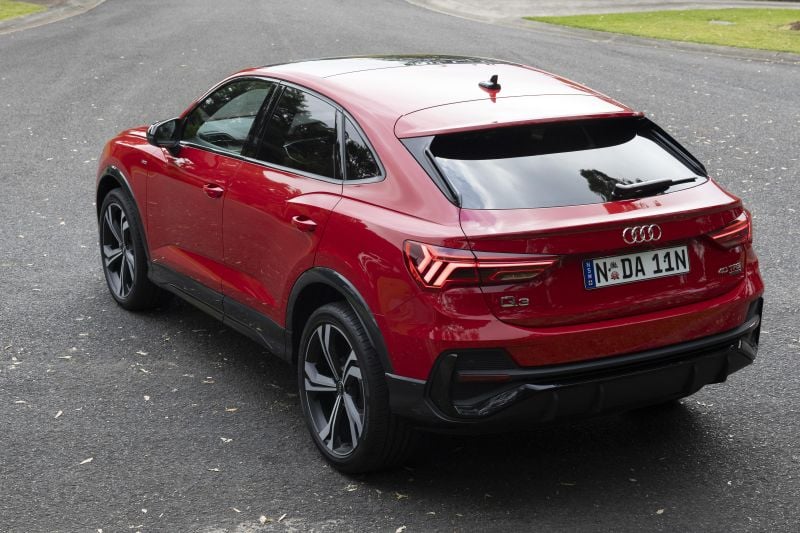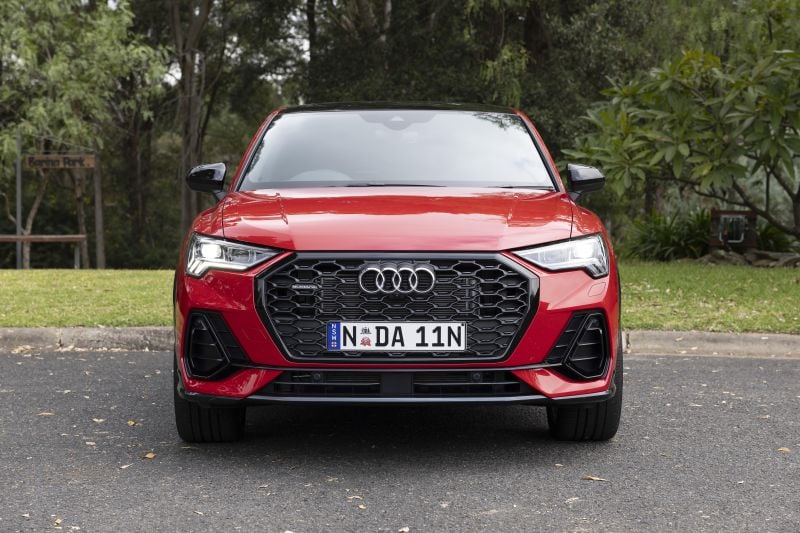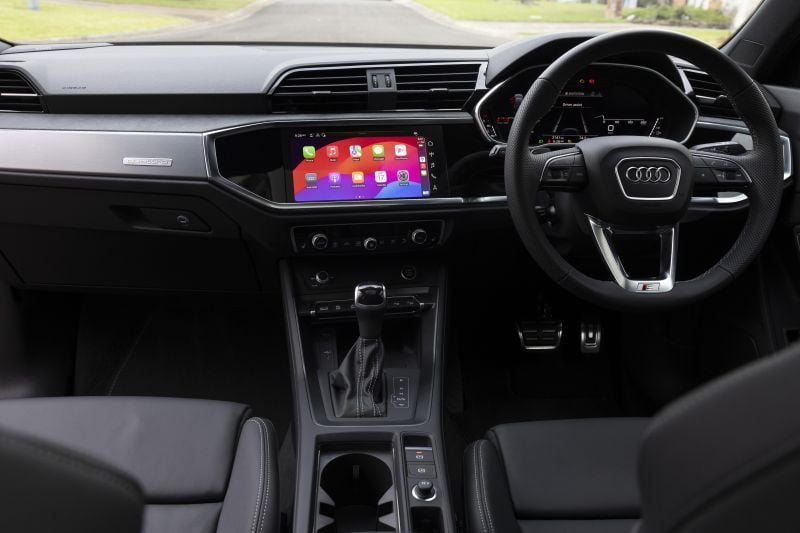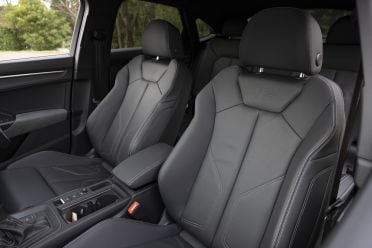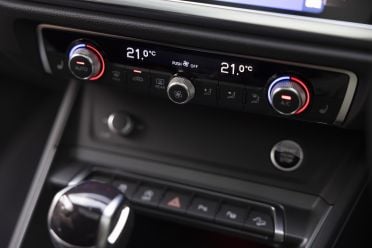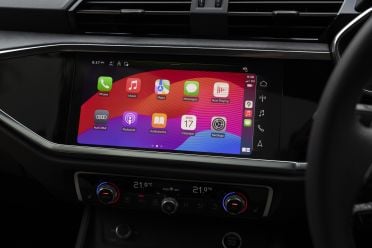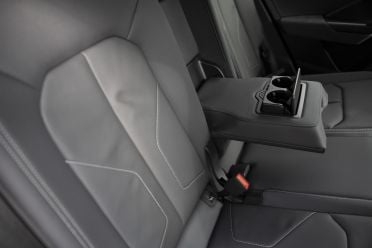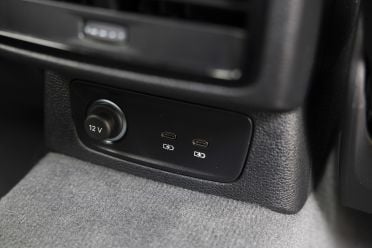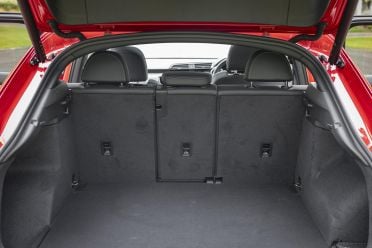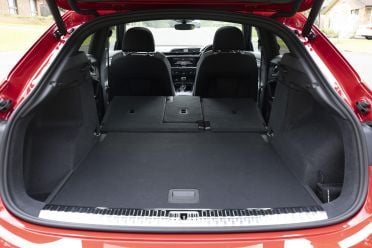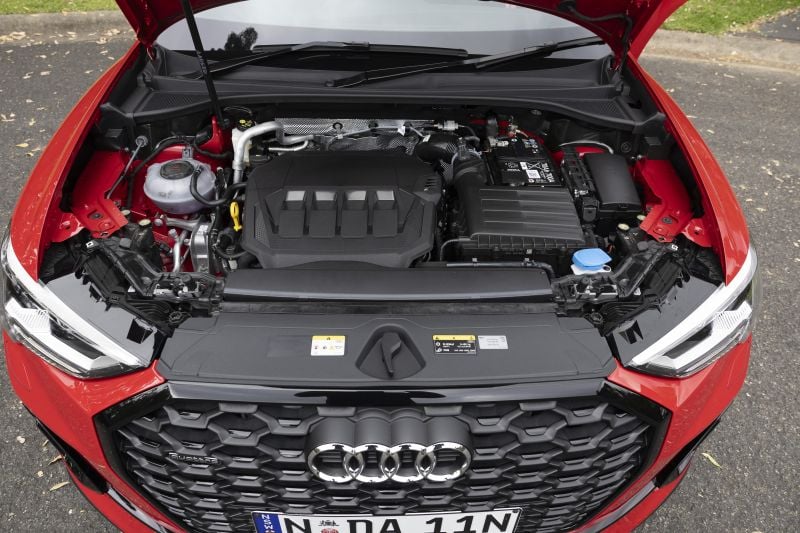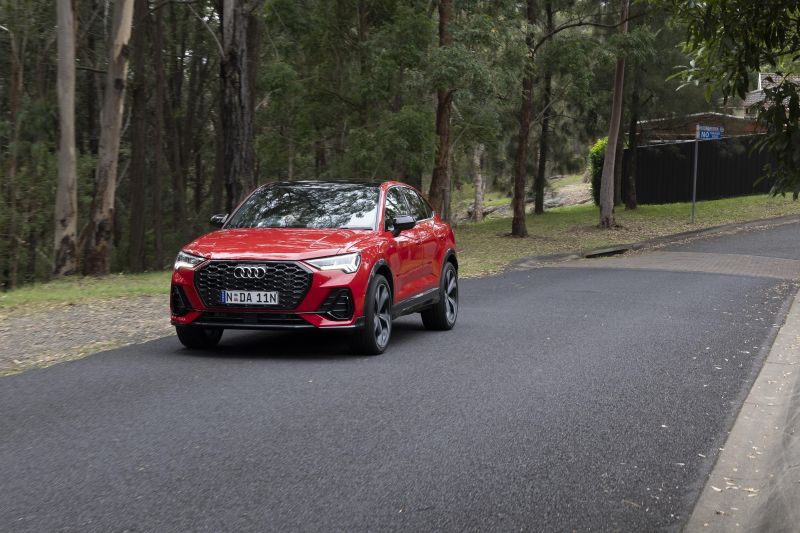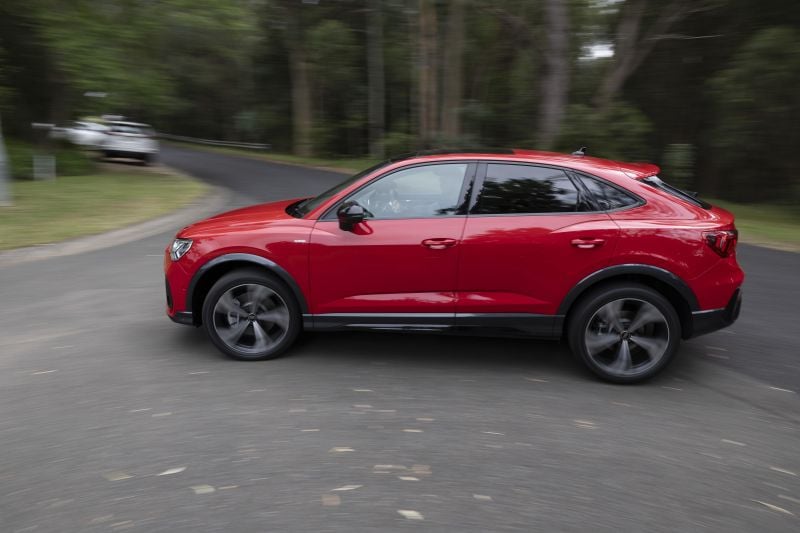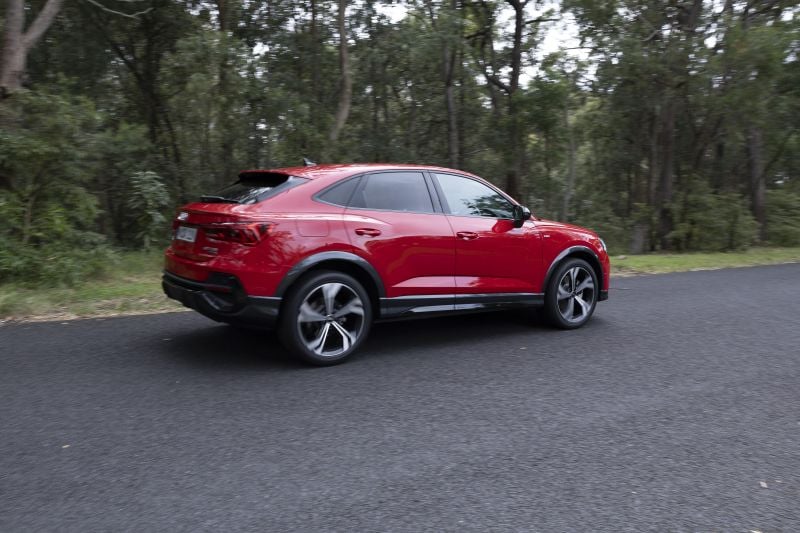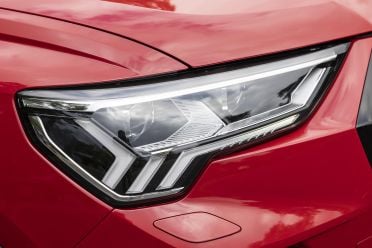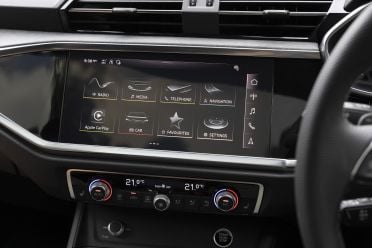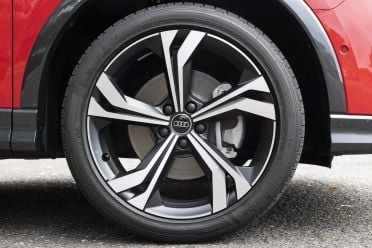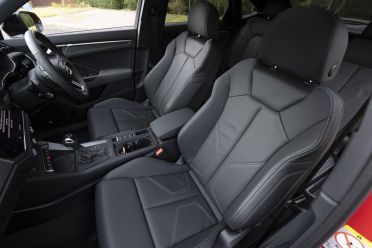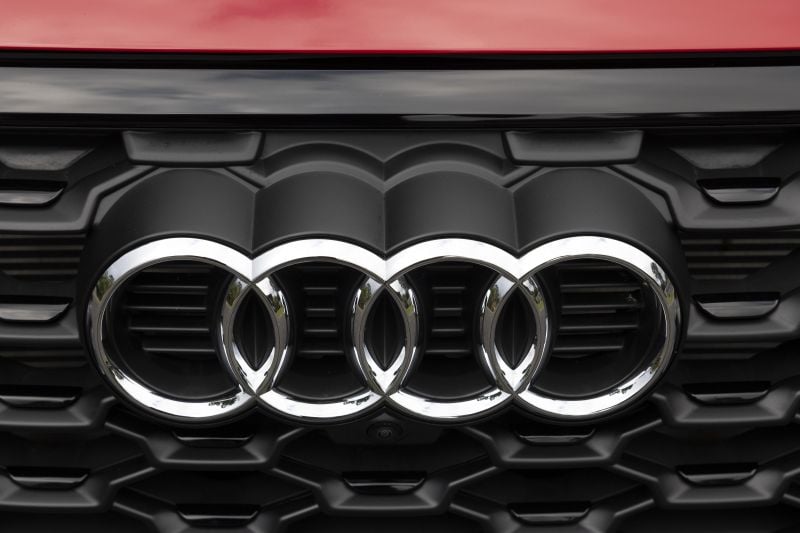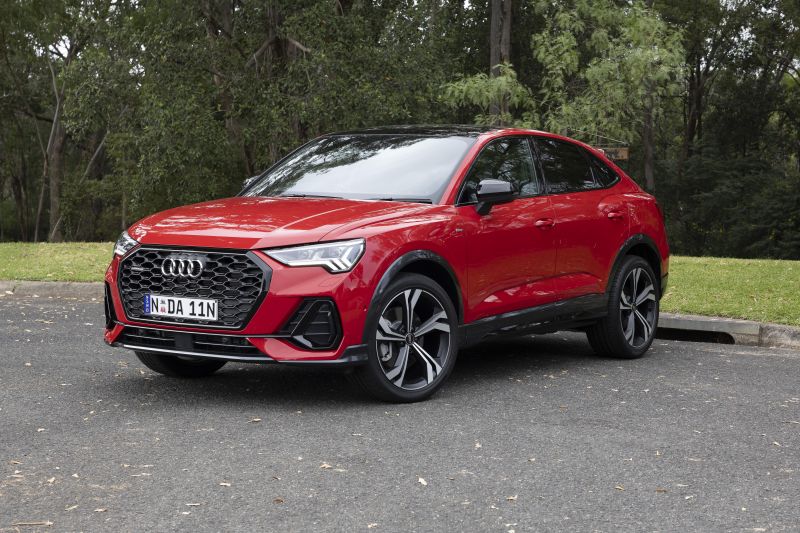I reckon the Audi Q3 is one of those quietly excellent cars that more people should consider.
Personally, I’d go for the SUV version, and it’d be the base 35 TFSI. For me it’s the sweetest offering, because it’s practical and powerful enough, and priced pretty nicely too.
So when I was thrown the keys to the 2024 Audi Q3 Sportback 40 TFSI S line – the most expensive, theoretically least practical version of the range before you get into RSQ3 territory – I didn’t expect to love it.
But I did – it’s really good, and I’ll tell you about it in this review.

How much does the Audi Q3 cost?
There are a wide range of Q3 variants in both regular SUV and Sportback body styles on offer in Australia. On test here is the Sportback 40 TFSI quattro S line.
2024 Audi Q3 pricing:
- 35 TFSI: $54,600
- 40 TFSI quattro: $62,800
- 40 TFSI quattro S line: $68,400
- RSQ3: $102,300
2024 Audi Q3 Sportback pricing:
- 35 TFSI: $58,200
- 40 TFSI quattro S line: $70,800
- RSQ3: $105,300
- RSQ3 10 Years Edition: $109,100
Prices are before on-road costs
To see how the Q3 compares with its rivals, use our comparison tool.
What is the Audi Q3 like on the inside?
The term I keep coming back to for Audi interior design is ‘technical elegance’, and yet again, the brand has nailed that brief for the Q3 lineup.
Admittedly it might look and feel a little less braggadocious compared to its German rivals, but I for one appreciate the polished-look finishes across the dashboard, the angular design elements, and the colourful and simple screens.
The 10.1-inch touchscreen infotainment system is easy to learn thanks to its intuitive menus, plus it features wired and wireless Apple CarPlay and Android Auto. I had no issues with connecting and reconnecting my phone during my time in the car.
There are no physical buttons down the side, and while there is a volume/tuning dial, it’s way down below the climate control panel. At least it has one, I guess.
Speaking of that climate system, there’s a clear and simple array of climate buttons and dials. There are heated seat control buttons too.
The 12.3-inch digital instrument cluster is crisp and simple to navigate, and there’s a navigation view for those who like to still use the in-built GPS system – in this case, with real-world Google Maps imagery on the cluster in front of the driver.
Storage comprises decent bottle holders in the doors with rubberised bases to stop things moving around, cupholders between the front seats, a wireless phone charging dock, as well as two USB-C ports in that same area. There’s also a small centre console bin under the armrest.
The leather-trimmed seats offer a good level of comfort – we did a couple of two-hour-plus stints and had no complaints – and there’s electric seat adjustment for both riders.
With the driver’s seat set for my position (at 182cm/6’0”) there’s enough room for me to sit without my knees hitting the hard plastic-backed seat ahead of me, and there’s reasonably good toe room, but thankfully – for a coupe-style model – my head still had a bit of clearance above it.
My 6’4” brother-in-law didn’t find it quite as amenable, but we knew that from the outset.
The five-up test saw a few complaints about foot room, mainly as transmission tunnel intrusion is a factor for back-seat space. Two in the back? No biggie. Three? Not great.
However, in daily duties where my daughter’s child seat was fitted (there are dual ISOFIX points in the window-seats and three top-tether points), it proved a great size.
Back-seat riders are treated to directional air-vents, a pair of mesh map-pockets, bottle-holders in the doors, a flip-down arm-rest with cupholders, and a pair of USB-C ports for device charging, too.
Audi claims the boot space of the Q3 Sportback is identical to the standard SUV, but that’s because it’s measured to the parcel cover. It’s a sizeable space, with 530 litres of capacity.
If you try and load any taller items you might find the limits of the load area; but really, it’s definitely big enough for a family of three’s luggage for a weekend away, with room to spare.
It’s great to see under the adjustable boot floor – which you can lower to allow more space, or keep in the higher position for a flat load-through over the fold-down back seats.
There’s a space-saver spare wheel, which also houses a subwoofer. Cleverly there are stoppers at the edges of the boot so the floor section stays up when you’re accessing the subfloor.
Further, there are storage trays on the sides of the boot area, including one with a 12-volt port and the other with a first aid kit.
There are those ever-handy shopping bag hooks too.
What’s under the bonnet?
Unlike some of the other Audi products, the Q3 range hasn’t yet been updated to offer 48V mild-hybrid (MHEV) tech. As a result, it still runs the same engine range as it did from launch.
The Q3 40 TFSI quattro powertrain tested here has a 2.0-litre turbo-petrol at its core, with outputs of 132kW (4000-6200rpm) and 320Nm of torque (1400-3900rpm).
This one gets a seven-speed S tronic dual-clutch automatic, and it has the brand’s customary all-wheel drive system. There’s a bit of a price to pay for the lack of 48V MHEV tech, with fuel use for these models being higher than some rivals.
2024 Audi Q3 fuel consumption:
- 35 TFSI: 6.9 litres per 100km
- 35 TFSI S line Sportback: 7.2 litres per 100km
- 40 TFSI quattro: 8.0 litres per 100km
- 40 TFSI S line quattro (incl. Sportback): 8.2 litres per 100km
- RS Q3 (inc. Sportback): 8.9 litres per 100km
For context, I saw 8.5 litres per 100km across a mix of driving, so pretty close to the claim. You’ll need to fill it with 95 RON premium unleaded petrol (98 RON for the RSQ3), and it has a 60-litre fuel tank capacity.
How does the Audi Q3 drive?
Before I tell you what I thought of the 40 TFSI version of the Q3, I just want to say that if I was buying one of these SUVs, I would more likely stick with the entry-level 35 TFSI powertrain.
I don’t need all-wheel-drive, and I find that the free-revving nature of the smaller engine does make for a slightly more enlightening drive experience, including the fact that it has a lighter feel at the nose of the car.
That said, the 40 TFSI quattro model is more powerful and snappier in its behaviour, and I can see why you’d choose it if you know you’ll appreciate the all-wheel drive system and more effortless performance.
I would argue it’s not quite zesty enough to be considered a sports SUV, but it does have enough grunt to feel effortless in most situations. In fact, it’s pretty sprightly when you put your foot down, especially in the Dynamic drive mode, and with the Sport transmission mode selected.
For that reason it could be all the SUV that anyone will ever really need if they’re looking at this kind of car, but I almost feel like it looks faster than it is.
The quattro all-wheel-drive system is tremendous in the way that it helps you power out of corners, and there’s a lovely linear weighting to the steering, which makes for a pretty engaging drive experience.
The ride is good for a vehicle sitting on 20-inch wheels with low-profile tyres too – whether you’re just dawdling around town, or amassing the miles on the highway, it feels comfortable and pretty composed for the most part. If you find a sharp-edged bump however, things can get a little clunky.
I even tested out the quattro all-wheel drive on a loose surface (I was the designated driver for a wedding in country NSW) and on a terrible ‘road’ outside Goulburn. It coasted along comfortably with five adults on board, with plenty of road-holding security too. That said, though, the front-drive 35 TFSI would have handled it…
But there are other elements of the drive experience which aren’t quite as impressive – the levels of refinement, mainly.
The car can be loud inside over coarse-chip surfaces, and at low speeds you can hear the mechanicals of the transmission when you’re shifting between R and D when parking. Many other SUVs (luxury or not) make you feel a bit more remote from those sorts of intrusions.
There’s also a noticeable amount of road noise on many road surfaces, and wind noise. Remember, this is about $75k worth of SUV, but it doesn’t necessarily feel as refined as some other $75k SUVs like the Lexus NX, for instance.
What do you get?
There are a wide range of Q3 variants in both regular SUV and Sportback body styles on offer in Australia. On test here is the Sportback 40 TFSI quattro S line.
Q3 35 TFSI highlights:
- 18-inch alloy wheels
- Adaptive LED headlights
- LED daytime running lights
- Aluminium roof rails
- Power tailgate
- S line exterior styling package (Sportback only)
- 10.25-inch digital instrument cluster
- 10.1-inch touchscreen infotainment system
- Audi connect plus
- Wireless Apple CarPlay, Android Auto
- Satellite navigation
- DAB+ digital radio
- 6-speaker sound system
- Wireless phone charger
- Dual-zone climate control
- Interior ambient lighting
- Keyless entry and start
- Leather upholstery
Q3 40 TFSI quattro adds:
- 19-inch alloy wheels
- Heated and power-folding side mirrors
- Painted bumpers
- Selectable drive modes
- 10-speaker sounds system
- Paddle shifter
- Auto-dimming rear-view mirror
- Black cloth headliner
- Power driver’s seat incl. 4-way power lumbar
Q3 40 TFSI quattro S line adds:
- 20-inch alloy wheels
- Rear privacy glass
- S line exterior styling package
- Progressive variable-ratio steering
- 12.3-inch digital instrument cluster
- Flat-bottomed sports steering wheel with ‘S’ badging
- Stainless steel pedals
- Alcantara interior elements
- Aluminium-look interior accents
- Aluminium sill plates with illuminated ‘S’ logo
- Front sport seats with S embossing, contrasting stitching
- Heated front seats
- Surround-view camera
- Semi-autonomous park assist
Is the Audi Q3 safe?
A five-star ANCAP safety rating – based on Euro NCAP testing conducted in 2018 – covers all but the RSQ3 models in the local range.
The Q3 scored 95 per cent for adult occupant protection, 88 per cent for child occupant protection, 76 per cent for vulnerable road users, and 85 per cent for safety assist. Good numbers.
Standard safety equipment includes:
- Autonomous emergency braking (AEB)
- Pedestrian, Cyclist detection
- Blind-spot monitoring
- Rear cross-traffic alert
- Lane departure warning
- Active lane assist (NEW)
- Adaptive cruise control with stop/go (NEW)
- Front, rear parking sensors
- Reversing camera
Choose the 40 TFSI S line and you get a surround-view camera and semi-autonomous park assist as standard.
How much does the Audi Q3 cost to run?
The Audi Q3 is covered by a five-year, unlimited-kilometre warranty.
Logbook servicing is required every 12 months or 15,000km, whichever occurs first.
Audi offers a five-year service prepaid service plan, and for this grade it costs $3330 or an average of $666 per year for maintenance. If you service with Audi, you also get your roadside assistance topped up.
There’s another option available however, which might well be worth considering: the Audi Advantage pack ($3250) allows you to extend the warranty, servicing cover and roadside assistance out to a seven-year plan. Good for your mindset, and potentially good for your resale value too.
CarExpert’s Take on the Audi Q3
There are some things that could be improved to make this an even better ‘luxury’ SUV experience, but as is compared to its overpriced rivals, the Q3 Sportback is a great choice for those who want higher ride height and a swoopy profile.
Tell us if you’d pick the 40 TFSI powertrain in the comments, or if you agree that the 35 TFSI is the better choice. Also let us know if you’re team SUV or team Sportback!
Click the images for the full gallery
MORE: Buy a Audi Q3
MORE: Everything Audi Q3





